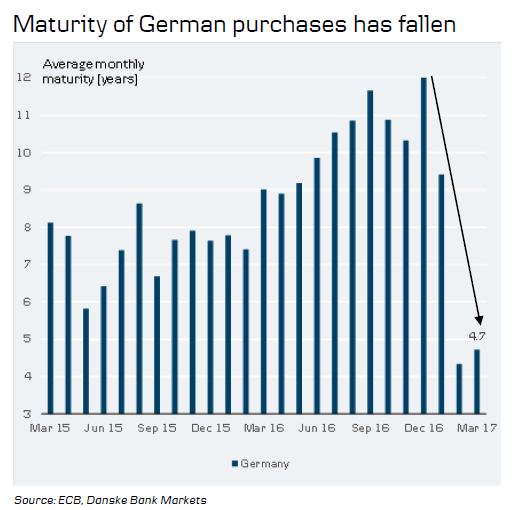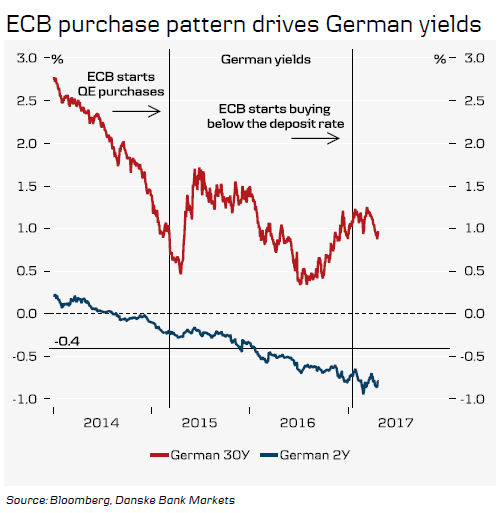We expect a slightly dovish tone from Mario Draghi at this week’s ECB meeting, as the main message should be that the ECB is on autopilot with its current monetary policy. Draghi has recently said ‘a reassessment of the current monetary policy stance is not warranted at this stage’ and we expect himto reiterate this, which should be perceived as dovish. Following the latest ECB meeting, speculation about the sequencing of the ECB’s exit from the very accommodative monetary policy increased and a month ago the market priced a 10bp deposit rate hike this year. Now the pricing of the hike has been postponed to late 2018, after prominent ECB members expressed a dovish view, thereby dampening market participants’ expectations. In our view, the recent dovish tone reflects the ECB’s perception of the pricing of hikes as a tightening of the financial conditions, which it considered as unwarranted.
Despite the expected dovish communication at the upcoming meeting, we believe the ECB could change its forward guidance on policy rates at the meeting in June. However, there is a risk that the ECB will also take a more cautious approach at the meeting in June, as Draghi has recently said ‘Before making any alterations to the components of our stance – interest rates, asset purchases and forward guidance – we still need to build suf ficient confidence that inflation will indeed converge to our aim’. We still believe the ECB will announce an extension of its EUR60bn monthly QE purchases at the September meeting and hence continue the purchase programme in 2018.
Reassessing the current monetary policy stance is not warranted
We still expect ECB to continue QE in 2018 Inflation expectations at QE announced levels Reassessing the current monetary policy stance is not warranted Recently, Draghi communicated that the ECB has not yet seen sufficient evidence to alter materially the assessment of the inflation outlook and related to this, the ECB has continually said there are no signs yet of a convincing upward trend in underlying inflation.
In the minutes from the latest ECB meeting, it was said that the linchpin for higher underlying inflation was a turnaround in wage dynamics. In our view, the ECB is very optimistic in its wage growth projection and with a lowering of the forecast we expect the ECB to announce an extension of QE purchases into 2018.

Low core inflation as long as wage growth stays low
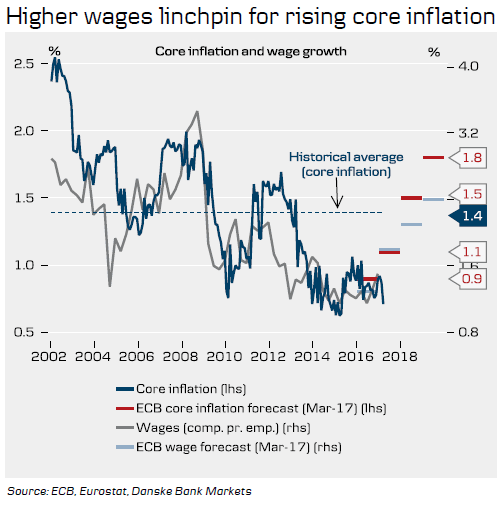

The ECB usually forecasts higher core inflation
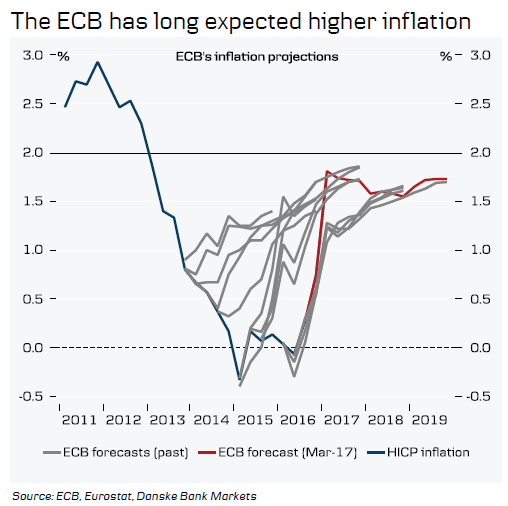
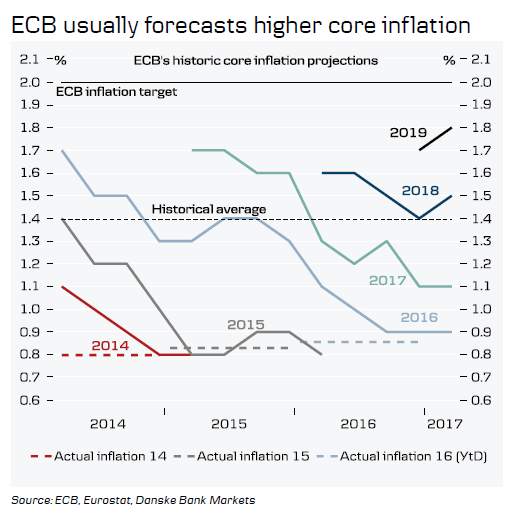
The ECB dampened the market’s speculation on rate hikes
Core inflation is set to stay low this year
The ECB dampened the market’s speculation on rate hikes The hawkish message at the latest ECB meeting resulted in the market pricing in a 10bp deposit rate hike at the end of this year. This then resulted in prominent ECB members dampening market participants’ expectations with a dovish communication that postponed the pricing of the hike to late 2018.
In our view, the pricing of hikes from ECB is very premature as the inflation outlook should not be strong enough to tighten the monetary policy this year. Another argument for hiking rates could be that banks were suffering after the long period of negative policy rate but it does not seem to be the case that the ECB wants to hike just to support the banking sector.

German banks are mainly paying for ECB’s negative deposit rate


Not clear that banks need support from the ECB hiking rates
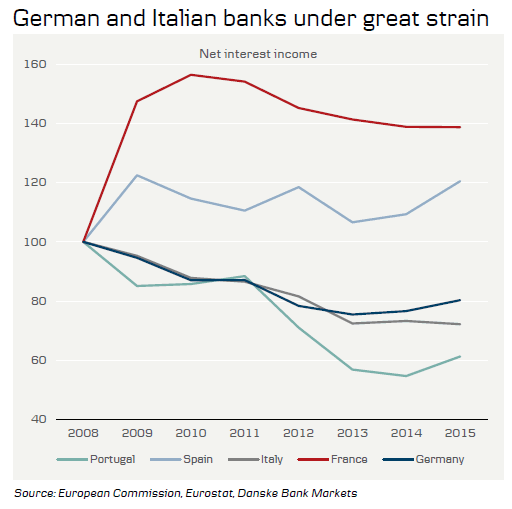

Speculation that the ECB will address the repo issues
The ECB focuses on the repo issues
At the latest ECB meeting in March, Draghi said the ECB was monitoring distortions on the very short-end German yield curve and last week, the ECB published a survey on credit terms and conditions in eurodenominated securities, which said that ‘the liquidity and functioning of markets for the underlying collateral… deteriorated, on balance, for nearly all types of eurodenominated collateral, although the deterioration was most pronounced for government bonds’.
This fuelled speculation that the ECB could address the repo issues at its upcoming meetings, for instance by lending out more of the collateral held by the eurosystem and/or easing the conditions.
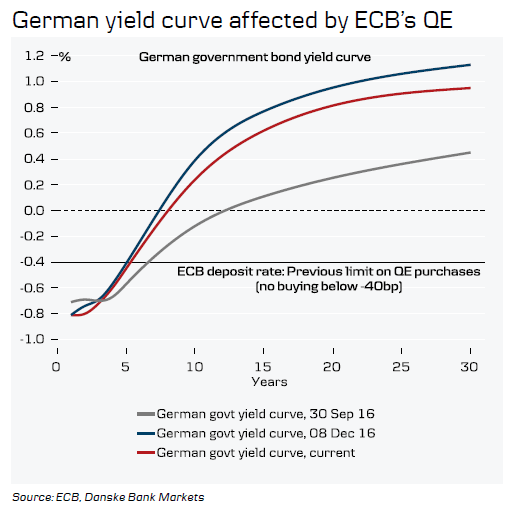
ECB’s purchase pattern one of the forces behind the repo issues
